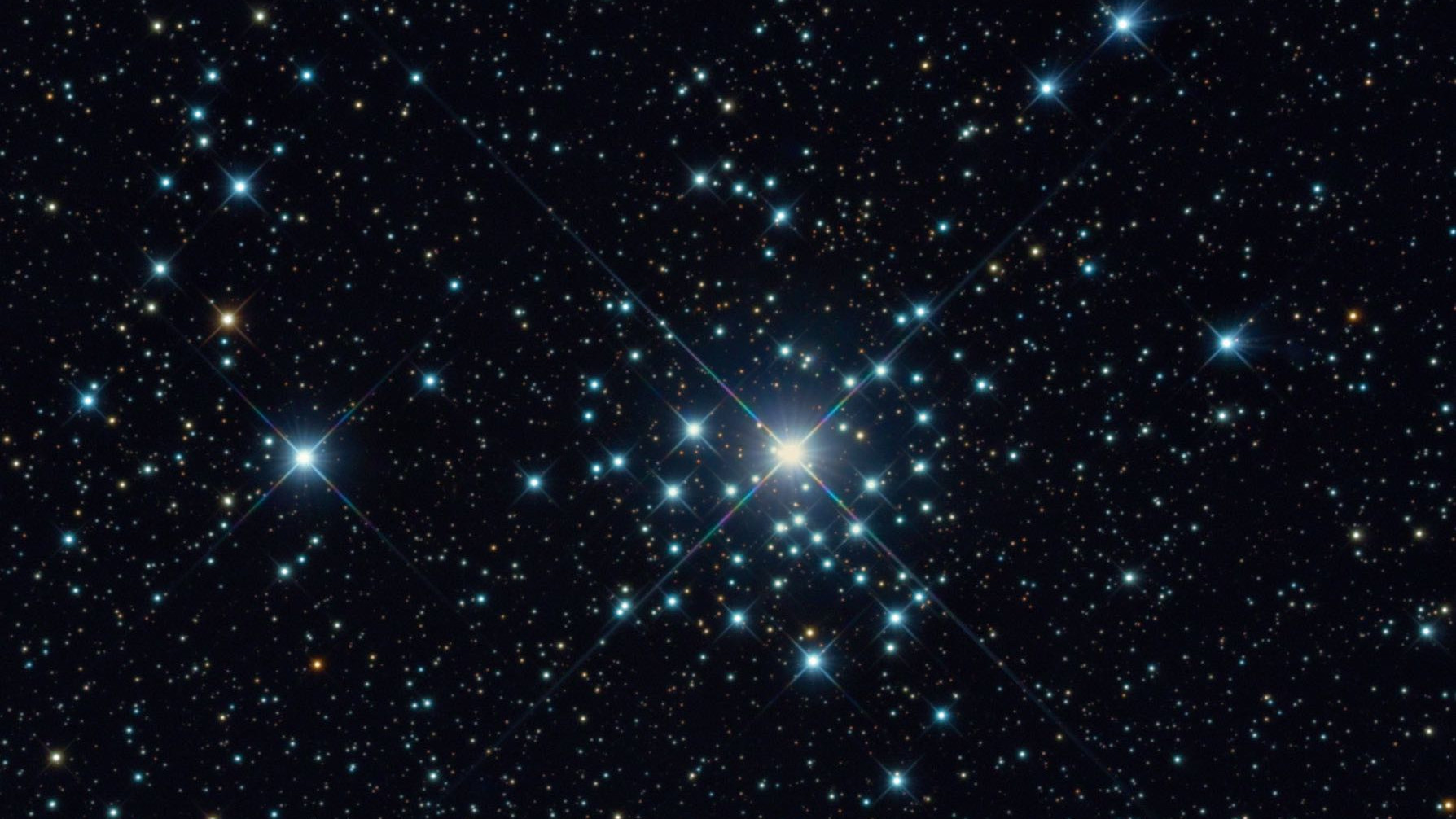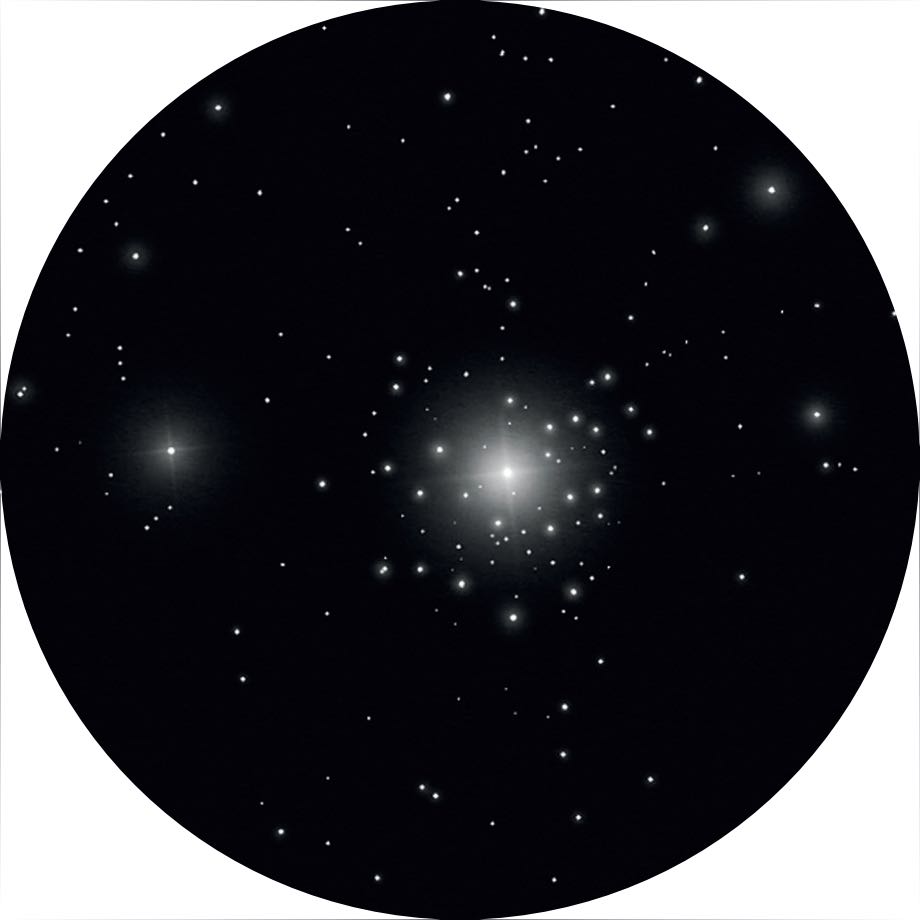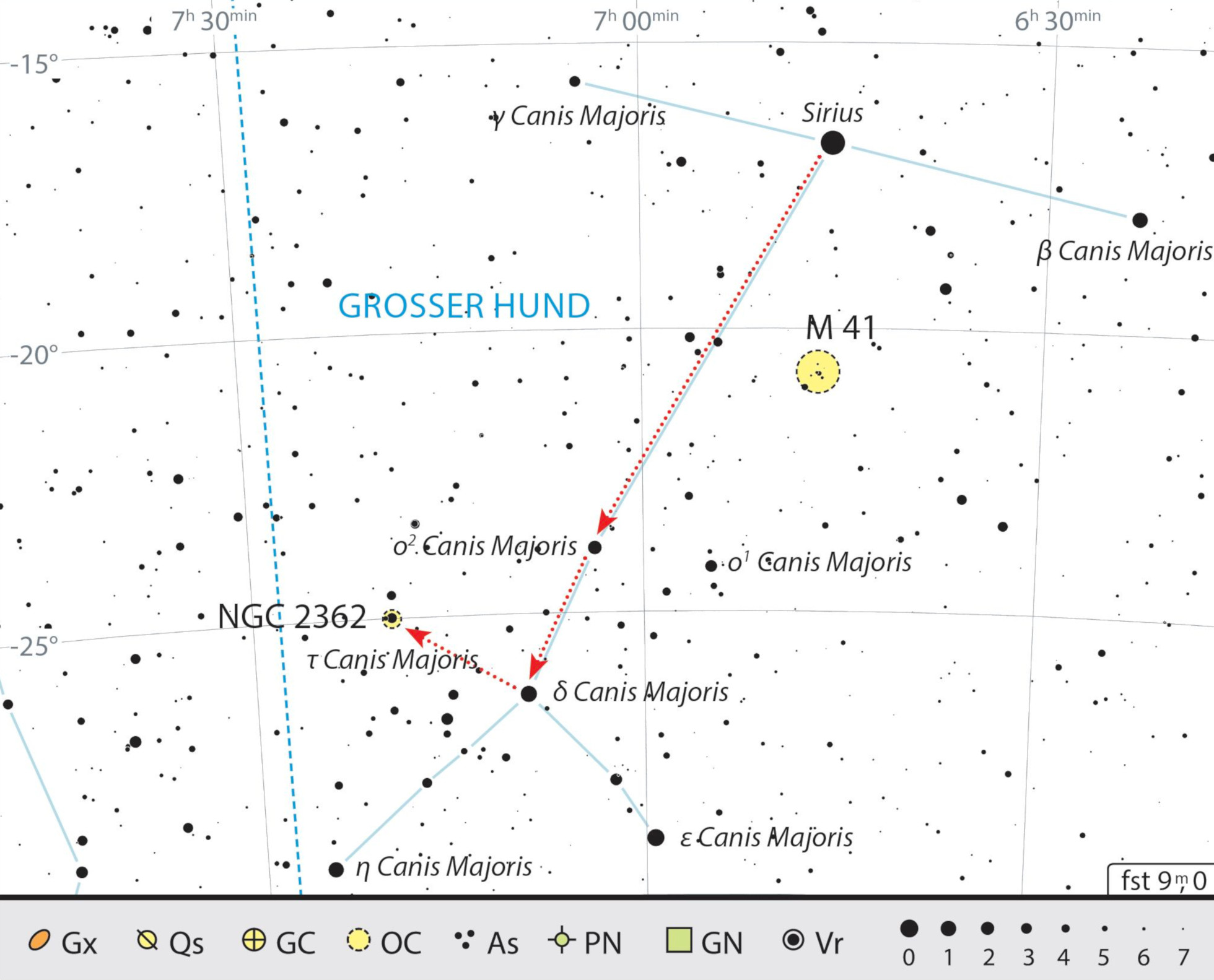NGC 2362 - The Tau Canis Majoris cluster
This brilliant cluster lies low on the winter horizon, and requires a telescope with an aperture of 8 inches or more, together with higher magnification.
 Cluster NGC 2362 in the constellation of Canis Major captured with a 20-inch RC telescope with a 4,492 mm focal length.
Bernhard Hubl and the CEDIC Team / CCD Guide
Cluster NGC 2362 in the constellation of Canis Major captured with a 20-inch RC telescope with a 4,492 mm focal length.
Bernhard Hubl and the CEDIC Team / CCD GuideThe open cluster NGC 2362 is located south of the celestial equator in the constellation of Canis Major, and is a really lovely object for medium-sized telescopes. It was first mentioned in 1654 by the Italian priest, entomologist and astronomer Giovanni Battista Hodierna. Charles Messier did not list it in his nebula catalogue, but it was discovered by William Herschel on 6 March 1785. The cluster is around 5,000 light years from Earth and it is estimated to be 4 to 5 million years old. Its angular size is 8'×8' and it has an apparent magnitude of 4.1.
Named after a bright star
 Drawing of NGC 2362 produced using a 16-inch telescope
at 138 to 400 times magnification. Anna Ebeling
Drawing of NGC 2362 produced using a 16-inch telescope
at 138 to 400 times magnification. Anna EbelingThe cluster can be found low on the horizon in winter. Starting from the brightest star in the night sky Sirius (α Cma) in the constellation of Canis Major, follow an imaginary line to the stars ο2 CMa and δ CMa. From the latter star, pan 2.5° to the north-east. There you will find the star Tau Canis Majoris (τ CMa), which forms the centre of open cluster NGC 2362. The cluster got its name from this bright central star.
The star is magnitude 4.4 bright and is, like the cluster, around 5,000 light years away from us. It is probable that all the other stars in the cluster group around this cluster member.
A gem in the winter night sky
If you’re using binoculars, usually only the brightest star τ CMa can be seen; occasionally you may be able to make out a faint nebula around the star. With a small telescope and a low magnification, the stars in the cluster are virtually outshone by the bright central star. Since the cluster is quite small, further stars can only be identified with higher magnification. There are around 40 stars grouped within a radius of 4'. About 60 stars in total belong to the cluster.
Around 15 to 20 stars with brightness of between magnitude 10 and 12 should be visible with a 20-cm telescope with high magnification. At around 500,000 times more luminous than our Sun, the stars in this cluster are among the brightest known stars. With a magnification of 150× or more, the brightest star can be seen to have two magnitude 10 to 11 companions. For many star fans, the Tau Canis Majoris cluster is a similar gem to the double cluster h & χ in Perseus - a brilliant white diamond surrounded by densely-packed glistening stars. It's therefore really worthwhile to pay it a visit, low on the horizon, during cold winter nights.
 Finding chart of the Tau Canis Majoris cluster in the constellation of Canis Major. J. Scholten
Finding chart of the Tau Canis Majoris cluster in the constellation of Canis Major. J. ScholtenAuthor: Michael Feiler / Licence: Oculum-Verlag GmbH
